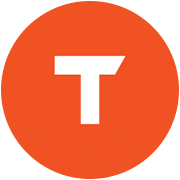
In recent years, generative AI has emerged as a transformative force in healthcare and life sciences, offering innovative solutions to complex problems. According to a March 2024 Forbes article, the health and wellness industry is almost a $10 trillion-dollar economy. The systems, though, are fairly outdated and inefficient. Introducing the power of generative AI benefits extends beyond improved patient care. Generative AI can reduce the administrative burden, freeing up doctors' and nurses' time for patient interaction and personalized care. It can also shift us from this terrible "sick-care" situation to wellness-based healthcare by focusing on prevention and early detection. AI can and will transform healthcare from reactive treatment to proactive health management. Forbes Article
Yet, organizations must confront various challenges to realize the benefits of generative AI in healthcare fully. Here's a look into the intricacies of leveraging AI in healthcare and life sciences, addressing the hurdles and pathways to achieving significant business value.
Overcoming Obstacles
One of the foremost challenges faced by healthcare and life sciences organizations is the fragmentation of data, often trapped in silos or locked within legacy systems. Mergers, acquisitions, and disparate technologies further exacerbate this issue, deterring seamless data integration and accessibility. This hurdle consumes valuable time and undermines the goal of a unified source of truth across patient, clinical, and device data.
However, Generative AI in healthcare can tackle data fragmentation in a couple of crucial ways:
Unified Data Aggregation: AI used in healthcare can act like a powerful glue for siloed data. It can learn the underlying patterns and relationships by analyzing existing data from various sources. This allows the expert system to generate a unified view of the data, even if it's formatted differently or in incompatible systems.
Data Imputation and Augmentation: AI solutions in healthcare can address missing data points within a silo or across silos. For instance, it can create realistic synthetic data following existing data patterns. This fills in the gaps and allows for a more comprehensive analysis. Additionally, healthcare AI can generate new data variations, enrich existing datasets, and promote better model training. Accelerating the migration and modernization of data empowers healthcare and life science organizations to enhance data accessibility, quality, and usability, thereby equipping teams with the necessary resources to innovate and streamline processes effectively.
In essence, generative AI solutions bridge fragmented data, creating a more cohesive and informative picture for data analysis. This leads to better decision-making, the display of hidden trends, and the optimization of various processes.
Navigating Regulatory Compliance
Regulatory compliance is a critical but time-consuming aspect of healthcare and life sciences. Since, non-compliance can result in severe penalties, organizations have to adhere meticulously to these mandates. Regulatory bodies require a clear understanding of how data is analyzed, and conclusions are reached. AI models in healthcare that are transparent in their reasoning facilitate human experts to verify the outputs. Hence, gen AI with explainability and transparency become a valuable asset in this area by offering several benefits.
Enhanced Regulatory Intelligence: AI in life sciences is trained to monitor vast amounts of data from regulatory bodies and competitor activity. This includes scouring websites, publications, and databases for updates on regulations, safety concerns, and competitor drug developments. By automating this process, AI frees up valuable time for human experts to focus on analysis and strategic decision-making.
Faster Report Generation: Compiling reports for regulatory submissions can be tedious. AI in healthcare companies automate much of the report generation process by analyzing data and populating templates with relevant information. This significantly reduces turnaround times and allows teams to focus on accuracy and completeness.
Improved Content Creation: Regulatory compliance often involves generating various documents, from patient safety information to clinical trial protocols. Generative AI for clinical trials assists in drafting these documents by creating standardized formats and suggesting variations based on specific requirements. This streamlines content creation and reduces the risk of errors.
Data Cleansing and Standardization: Healthcare and life sciences organizations have to source data necessary for regulatory submissions from multiple channels, leading to potential discrepancies or gaps in information. Generative AI in healthcare can identify missing data points and create synthetic data that adheres to existing patterns. Additionally, it can help standardize data formats across different systems, ensuring a smooth submission process.
By implementing generative AI responsibly, healthcare and life science organizations can achieve greater efficiency, reduce the burden of compliance tasks, and ultimately improve the quality and safety of their services.
Addressing Hallucination Risks
Large language models (LLMs) may produce erroneous outputs, posing risks to decision-making processes. Generative AI Services mitigate hallucination risks by emphasizing high-quality training data, data augmentation, fact-checking/grounding mechanisms, and confidence scoring. By ensuring the reliability and plausibility of outputs, AI applications in healthcare enhance the integrity of decision-making in healthcare and life sciences.
Maximizing ROI
Realizing the full potential of AI solutions involves migrating and modernizing data infrastructure, enabling seamless access, quality enhancement, and regulatory compliance. By cultivating a solid data foundation, transformative technology empowers teams with the insights needed to drive innovation and optimize processes effectively.
Additionally, deploying automation for high-value use cases in healthcare nurtures a dynamic cycle of process optimization, driving revenue gains and operational efficiencies. From summarizing patient-clinician conversations to creating personalized care plans, the applications of AI in healthcare are diverse and impactful.
Fueling Expansion
Embarking on an AI journey in healthcare necessitates a strategic roadmap incorporating key milestones and actionable strategies. The roadmap for generative AI in healthcare begins with the migration and modernization of data, laying the groundwork for AI integration. Subsequently, organizations embark on a discovery phase to identify high-value use cases and develop a minimum viable product (MVP) to showcase the technology’s potential. Scaling the MVP enterprise-wide entails seamless integration supported by robust change management initiatives.
Generative AI services accelerate this journey, providing end-to-end support from conception to production. Organizations can optimize costs and streamline operations by leveraging accelerators and domain-specific expertise, driving faster business value realization.
Expediting Business Impact
AI accelerators in healthcare offer ready-to-deploy solutions to optimize use cases, empower clinicians, and quicken knowledge management. From summarizing patient-clinician conversations to developing knowledge graphs, these accelerators streamline operations and open new avenues for innovation.
In conclusion, generative AI is promising to drive transformative change in healthcare and life sciences. Organizations can unlock significant business value and pave the way for AI-driven excellence by addressing challenges and leveraging generative AI solutions.

AUTHOR - FOLLOW
Editorial Team
Tredence
Topic Tags
Next Topic
Banking's Triple Play: Efficiency, Precision, and Profitability with Generative AI
Next Topic




